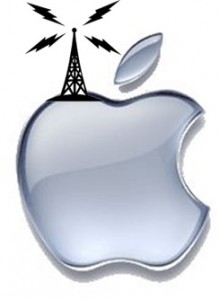
As you’re reading this post, Paul and I are in full CES mode, ready to face the “revenge of the nerds” in Las Vegas at the world’s biggest trade show, featuring the latest and greatest gadgetry and innovations.
As we went through our pre-CES preparation routine, we have learned (the hard way) that it’s always smart to put together a plan about how to attack this mega-conference. Of course, you can’t see everything at the world famous Consumer Electronics Show, especially given that the entire Las Vegas Convention Center is filled to capacity, along with a half dozen or so hotels and conference centers like the Venetian and the Sands. More than 3,600 companies are expected to show off their newest devices and advances.
But not Apple. They don’t attend the event. But they will be the most talked about entity at CES because so much of what they make and believe in is reflected by other brands and companies. From accessories for their entire line of products to the influence they have on other gadget and device makers, Apple will be everywhere.
And from iPhones to iPads to the Apple Watch, so much of what powers CES is driven by the company that Steve Jobs turned into the biggest in the world. The thousands of engineers, designers, and marketers who attend this mega-event will candidly tell you just how much Apple influences their companies, their products, and their careers.
Before the holidays, I ended up watching 60 Minutes, which must have immediately followed a football game. Maybe you saw the segment, featuring Charlie Rose interviewing Apple CEO Tim Cook, as well as a host of other Apple execs. It was a rare inside look at the Cupertino campus, but more importantly, a window into the company’s heart and soul during the key era that followed Steve Jobs’ passing.
I often have a problem with consultants, analysts, and pundits who constantly point to Apple as the gold standard for all businesses. There is no denying their off-the-charts success, and there is universal agreement that Steve Jobs was a one-of-a-kind leader. But to reach the lofty heights of Apple simply isn’t realistic for the average business, or even big companies like General Motors or Disney.
But that doesn’t mean there isn’t a great deal of learning that can come out of studying the Apple success story, and how the company has managed to achieve incredible growth and influence even after the passing of Jobs. In fact, Apple’s impact on the ways in which consumers think about and use products and services impacts almost every businesses trying to effectively compete in this newly defined environment.
The two-part feature on 60 Minutes provides great insights about how any radio company could think like Apple, especially when it comes to creating great products for consumers to enjoy. You don’t need to have a multi-billion dollar market cap to adopt and embrace some of the basic principles 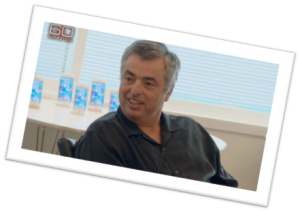 espoused by these Apple execs. And there’s no question their mindset and world view are the stuff it takes to turn good companies into amazing ones.
espoused by these Apple execs. And there’s no question their mindset and world view are the stuff it takes to turn good companies into amazing ones.
Let’s start with Eddy Cue, Apple’s SVP of Internet Software and Services. He talked about the rush that comes from knowing that so many millions of people use the company products:
“It’s amazing to be able to work in a place where you’re building products that everybody in the world uses. Whether it’s a two-year-old or 100-year-old, they get to experience the products that we’re building and that’s amazing.”
But if you think about it, radio isn’t dissimilar at all. If you work in the radio business, you’re producing a product that more than 90% of people in your town – whether it’s New York City or Nome – use on a weekly basis. Just about everyone listens to the radio at one time or another in a typical week – something to 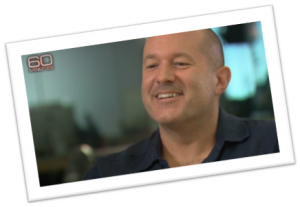 think about during the year ahead. How exciting is it to be part of an industry that plays a role in just about everyone’s life?
think about during the year ahead. How exciting is it to be part of an industry that plays a role in just about everyone’s life?
Then there’s the world-renowned Jony Ive, Apple’s Chief Design Officer. From the plans for Apple’s new out of this world headquarters (shown below in Part 2 of the 60 Minutes feature) to just about every product Apple’s made in the past two decades – iPods, iPhones, MacBooks, etc. – Ive is constantly thinking about how his products look and feel to consumers.
In the quote below, he’s talking about the thinking that went into the design of both of the new iPhone 6S smartphones, and the qualities he looks for in new products:
“And we chose these two because partly they just felt right, they somehow, not from a tactile point of view. But just emotionally they felt like a good size.”
Ive espouses the importance of the emotional feel of his products, a topic that is often discussed in this blog about radio. A great radio station isn’t just the mechanical rhythm of how the music is scheduled or where the stopsets are placed. It’s not about breaks that fit into prescribed time packages. And it’s not about running commercials that simply help the station make goal, ignoring their sound and feel.
Perhaps more than anyone else at Apple, Ive has influenced more products and services to strongly consider the UX – how does it feel to use their products. And if you think that’s a daunting task because a large percentage of your market listens to your stations(s), Apple has the same challenge: making devices that are used by generations of consumers, all of who must feel emotionally comfortable with their products.
Apple devices or radio formats aren’t just about what they do and how they work. How they feel to those who use them goes to the heart of creating something that resonates with people, even on a mass appeal basis. These emotional benefits matter – variables that many in radio don’t always consider when 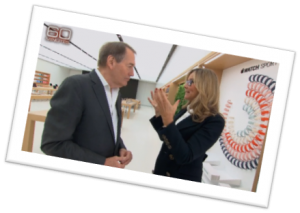 creating stations, shows, and formats. How does your station or show make people feel?
creating stations, shows, and formats. How does your station or show make people feel?
Angela Ahrendts is the SVP heading up Apple’s retail and online stores. In the 60 Minutes feature, she takes Charlie Rose behind the scenes into the research facility her team uses to create great customer experiences:
“The most important goal is, is that it is dynamic. People are used to living on their phone. So they’re used to being dynamic, emotive, immersive. And so how do we make sure when they walk into a store they say, ‘Wow?’”
That CX – Customer Experience – is part of Apple’s DNA. Ahrendts’ goal is to be sure the retail experience matches that same level of energy and satisfaction that Apple hardware and software exude.
For radio, it’s a reminder the personal touch with a radio brand – inside the station, the air studio, and at events – truly matters and is a big part of the ways in which listeners interact with radio. None of this is lost on Apple, and radio companies would do well to think about how their stations look wherever consumers interact with them in public or even when they stop by to pick up a prize.
And finally, Apple continues to tell us that innovation is everything – even if that means some potential fallout for legacy products. Phil Schiller 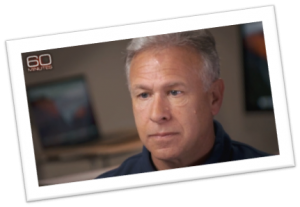 heads up marketing for Apple, and is one of the key players in the company’s public presentations.
heads up marketing for Apple, and is one of the key players in the company’s public presentations.
He talks about how subsequent Apple gadgets have impact on their predecessors and how what is often called “cannibalization” fits perfectly into the company’s overall consumer strategy:
“It’s not a danger, it’s almost by design. You need each of these products to try to fight for their space, their time with you. The iPhone has to become so great that you don’t know why you want an iPad. The iPad has to be so great that you don’t know why you why you want a notebook. The notebook has to be so great, you don’t know why you want a desktop. Each one’s job is to compete with the other ones.”
And while hindsight is indeed 20/20, looking back at the past decade of content creation and media distribution should send the radio (and newspaper and TV) business the message that it’s especially important to listen to consumers, seek out new media pathways, and not be afraid to dent existing products. That’s because at some point, you end up playing catch-up; playing from behind in spaces like streaming, mobile, podcasts, and others.
If the iPod team vociferously fought the iPhone innovation, where would Apple be today? Or if a decision was made that iPads would negatively impact iPhones, would Apple have missed an important link into the mobile revolution?
It takes courage to disrupt yourself, but that’s been Apple’s mantra – and the results are…the results.
None of us may ever have the privilege of working for Apple or a company anywhere near its magnitude and influence. But adopting some of their operating principles is something that any radio brand – or consultancy or mobile app development team – can embrace and benefit from.
We’ll be looking for Apple’s influences all this week at CES.
Check out our CES reports in InsideRadio. If you’d like to participate in our free webinar, “10 Innovations From CES 2016 & What They Mean To Radio,” click here.
To view both 60 Minutes segments, click below:
- Why “Dance With Those Who Brung You” Should Be Radio’s Operating Philosophy In 2025 - April 29, 2025
- The Exponential Value of Nurturing Radio Superfans - April 28, 2025
- What To Do If Your Radio Station Goes Through A Midlife Crisis - April 25, 2025




Put this one in the “Best of” for 2016 already. Why NOT look to Apple for inspiration?
Nice parallel on usage.
Enjoy CES.
Ken, I’m glad it worked for you. Thanks for the kind words. (My feet already hurt!)
Great article Fred.
It really causes one to lament how radio is NOT focused on the listener experience when it comes to their Internet streams. Pureplays are not making this mistake.
Radio needs to adopt the same philosophy as Apple. Radio streams should fight for their space and over-the-air radio should fight for theirs.
The only way to accomplish this is if you don’t have the same person responsible for both (to say nothing of multiple over-the-air products too).
Dick, you raise some good points. For decades, the UX in radio has been an afterthought. Apple has changed the media and technology culture in our world, and radio has to get with the program to keep pace. Thanks for the comment and for reading our blog.